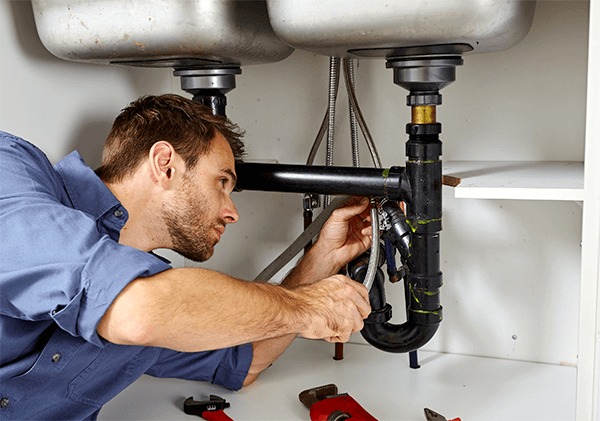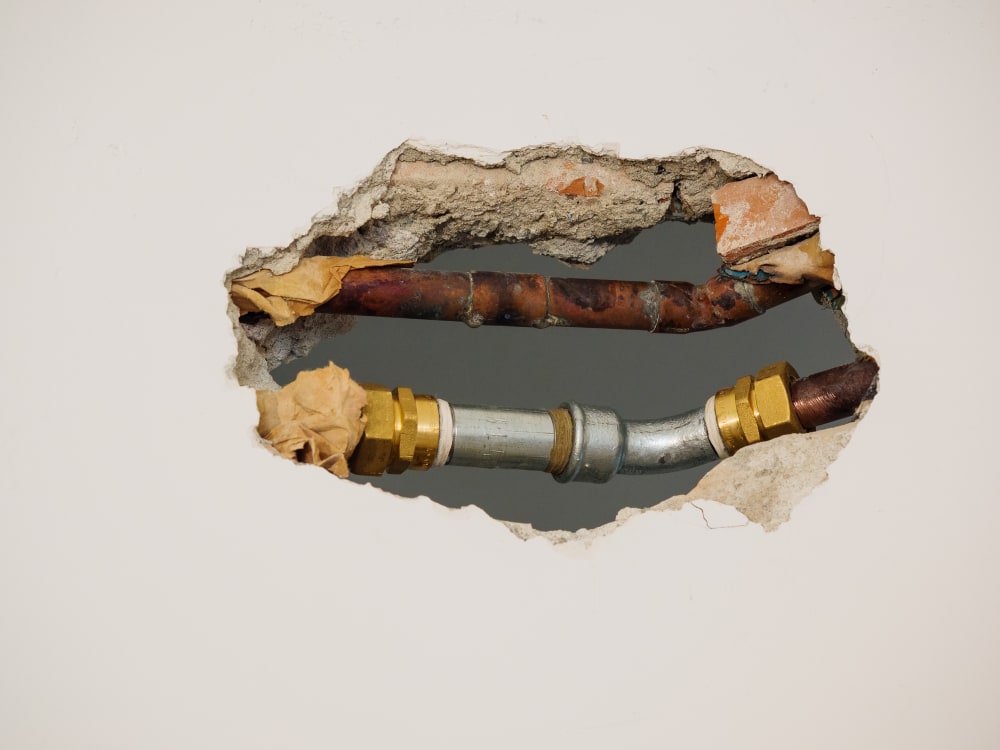Just how do you actually feel when it comes to Main Plumbing Issues Found in Old Houses?

Older homes usually include appeal, character, and background, however they can also bring a host of plumbing concerns. Whether you're taking care of aging pipelines, low tide pressure, or leakages, understanding how to attend to these common troubles is critical to preserving a secure and practical home. In this overview, we'll check out the regular plumbing challenges encountered by older homes and offer sensible services to maintain your plumbing in leading shape.
Recognizing Typical Pipes Issues
Aging Pipelines
Among the most usual problems in older homes is maturing pipes. Depending upon the era in which your home was developed, the pipelines might be made from products that have degraded over time, such as galvanized steel, cast iron, and even lead. These products can corrode, end up being breakable, or establish leakages, leading to water damage and prospective carcinogen.
Water High Quality Screening
Older pipes can influence the quality of your water. Conduct a water high quality examination to check for pollutants such as lead, rust, or other impurities that may be presented by maturing pipes.
Solutions for Typical Pipes Issues
Changing Aging Pipelines
If your home has old, weakening pipelines, consider changing them with modern materials like copper or PEX. This can be a substantial investment, but it will certainly protect against future issues and improve the security and integrity of your pipes system.
Taking Care Of Low Water Stress
To repair low tide pressure, start by cleansing or changing old components and removing mineral buildup in the pipes. If the problem persists, it might be essential to replace sections of corroded pipes.
Repairing and Replacing Leaking Pipes
For small leaks, you can use pipe clamps or epoxy putty as a short-lived solution. However, it's finest to change dripping pipes completely to avoid further damage.
Updating Fixtures
Updating old fixtures to contemporary, water-efficient designs can improve your home's plumbing efficiency and decrease water consumption. Look for fixtures with the WaterSense label for the very best efficiency.
Managing Pipe Deterioration
If your pipes are rusted, changing them with corrosion-resistant materials like copper, PVC, or PEX is the very best option. Normal inspections and water quality maintenance can assist protect against better rust.
Low Tide Stress
If you're experiencing low tide stress, maybe as a result of mineral deposits, deterioration inside the pipelines, or old fixtures that are no longer functioning effectively. This can be a major hassle, particularly in areas like showers and sinks.
Dripping Pipelines
Leaks are an additional regular issue in older homes, frequently triggered by corroded or damaged pipelines. Even tiny leaks can lead to substantial water damages, mold development, and boosted water bills otherwise attended to quickly.
Out-of-date Components
Out-of-date plumbing components such as faucets, bathrooms, and showerheads not only look old yet might also be much less efficient, vulnerable to leaks, or inappropriate with modern pipes requirements.
Pipeline Rust
Deterioration is a typical trouble in older pipes, specifically those made from galvanized steel or cast iron. Rusty pipes can restrict water circulation, trigger staining, and at some point result in leakages or pipe ruptureds.
Assessing the Problem of Your Pipes
Examining Visible Pipes
Beginning by examining any kind of visible pipes in your home, such as those in cellars, crawl spaces, or under sinks. Try to find indicators of corrosion, leaks, or corrosion, which can show underlying issues.
Checking for Leakages
Check for leakages by evaluating areas around faucets, commodes, and under sinks. You can also monitor your water meter prior to and after a period of no water utilize to identify covert leaks.
When to Call a Specialist
While some pipes issues can be taken care of with do it yourself solutions, there are times when it's finest to call a professional. If you're handling significant leakages, comprehensive rust, or are not sure concerning the problem of your pipes, a certified plumbing professional can offer skilled analysis and fixing.
Preventive Upkeep Tips
Regular Inspections
Frequently check your plumbing system for signs of wear and tear. Catching issues early can avoid expensive repair work down the line.
Water Stress Law
Guarantee your water stress is within the advised array to stay clear of emphasizing your pipelines and components. A plumbing can install a pressure regulator if required.
Water Top Quality Upkeep
Mount water filters or conditioners if your water top quality is poor. This can shield your pipelines and components from damage triggered by hard water or contaminants.
Positive Pipe Replacement
If your home has older pipelines, think about positive replacement before major concerns emerge. This can conserve you from emergency repair work and water damage.
Verdict
Managing pipes problems in older homes requires a mix of alertness, precautionary maintenance, and timely upgrades. By comprehending the usual obstacles and recognizing when to look for expert assistance, you can guarantee your pipes system remains useful and trustworthy for years ahead.
Common Plumbing Issues in Older Homes and How to Fix Them
Owning an older home in Australia comes with its unique charm and a set of challenges, especially when it comes to plumbing. The Sunshine Coast has many older properties that can harbour plumbing problems that aren t just inconvenient but potentially costly. Here s a look at some common plumbing issues in older homes and expert advice on how to handle them.
Outdated Piping Materials
Many older homes were built with galvanised steel, cast iron, or even lead pipes, materials that are far from ideal by today s standards. Galvanised pipes are prone to corrosion and clogging, while lead pipes pose serious health risks.
How to Fix:
Replacing old pipes is a job for a professional. Upgrading to copper or PVC piping not only enhances water quality and flow but also increases the property s safety and value. If you suspect your home has outdated materials, a licensed plumber can conduct a thorough inspection and recommend the best course of action.
Corrosion and Pipe Degradation
Over time, exposure to water and minerals can cause pipes to corrode, leading to leaks, bursts, and water contamination. Corrosion is especially common in homes over 50 years old.
How to Fix:
Regular inspections can catch early signs of corrosion. If corrosion is found, the affected section of piping often needs to be replaced. For homes with extensive corrosion, a complete plumbing overhaul might be necessary. It s crucial to consult with a plumbing expert to understand the extent of the issue.
Tree Root Intrusion
Older neighbourhoods usually have mature trees whose roots can intrude into pipe lines, causing blockages or damage. This is particularly problematic for sewer lines, where roots seek out water sources.
How to Fix:
A plumber can use a specialised camera to inspect sewer lines for root intrusion. If roots are a problem, methods like root cutting or hydro-jetting can clear the obstruction. In severe cases, part of the pipe may need replacing. Consider root barriers around the piping to prevent future issues.
Inadequate Water Pressure
Low water pressure in older homes can be due to various factors, including corroded water lines, sediment build-up in pipes, or outdated fixtures.
How to Fix:
First, check if the low pressure is isolated to one area or throughout the house. Replacing old fixtures can sometimes resolve the issue. However, if the problem is more widespread, it might be due to sediment or corrosion. Flushing the system or replacing the affected pipes usually restores normal pressure. Again, a professional assessment is advisable.
Outdated Fixtures
Older homes often feature fixtures that are not only visually dated but functionally inefficient. This includes everything from toilets and taps to showerheads and washing machine hoses.
How to Fix:
Updating these fixtures can improve both water efficiency and the aesthetic appeal of your home. Modern fixtures are designed to conserve water, which can significantly reduce your water bill and lessen your environmental impact.
Conclusion
Maintaining the plumbing in an older home requires a proactive approach. Regular checks and updates are key to preserving these beautiful properties. If you re facing plumbing issues in your older home, it s best to call on experienced professionals like Green & Gold Plumbing & Gas. With the right expertise, even the most daunting plumbing problems can be resolved, ensuring that your home s character is maintained while its functionality is enhanced.
https://gandgplumbing.com.au/common-plumbing-issues-in-older-homes-and-how-to-fix-them/

I'm just very eager about and I really hope you enjoyed reading the entire article. Sharing is caring. Helping people is fun. We cherish your readership.
Call Today